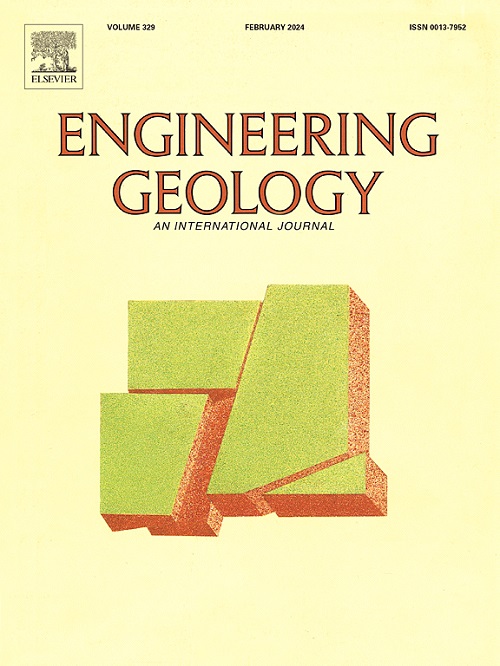基于多源地球物理数据分析的大口径输水管道泄漏检测与定位
IF 8.4
1区 工程技术
Q1 ENGINEERING, GEOLOGICAL
引用次数: 0
摘要
地下供水系统管道泄漏威胁着结构完整性和公共安全。中、大直径管道由于隐蔽在地下,对泄漏点的定位十分困难。本文对主要供水管道进行了一系列的地球物理试验,探索了合适的泄漏检测方法,包括频率电磁法(FEM)、探地雷达(GPR)和电阻率层析成像(ERT)。比较了这些方法的精度、量程和效率,并进行了综合验证,提出了一种综合检测方法。选取两个疑似泄漏段进行综合测试,收集了多源地球物理数据。结果表明,该方法能有效地检测和定位异常的近似方位。GPR方法可以精确识别管道位置、深度、空隙或富水区域。ERT提供了更精细的异常分布,证实了FEM和GPR的发现。最后,通过钻孔取样对检测结果进行了验证。基于这些发现,定义了管道泄漏风险系数K,用于对快速检测异常进行分类和评估。计算结果表明,两个重测区域均处于泄漏高风险范围内,表明该方法具有较高的精度。这种综合方法为大直径管道泄漏检测提供了有效、可靠的方法。本文章由计算机程序翻译,如有差异,请以英文原文为准。
Leakage detection and localization of large diam water pipeline based on multi-source geophysical data analysis
Pipeline leakage in subterranean water supply systems threatens structural integrity and public safety. Locating leaks in medium and large-diameter pipelines is challenging due to their underground concealment. This paper presents a series of geophysical tests on main water supply pipelines, exploring suitable leakage detection methods, including Frequency Electromagnetic Method (FEM), Ground Penetrating Radar (GPR), and Electrical Resistivity Tomography (ERT). The accuracy, range, and efficiency of these methods were compared, and a composite verification was performed to propose an integrated detection approach. Two suspected leakage sections were selected for comprehensive testing, with multi-source geophysical data collected. Results show that the FEM can effectively detect and locate the approximate orientation of anomalies. The GPR method precisely identifies pipeline location, depth, and voids or water-rich areas. ERT provides a finer distribution of anomalies, corroborating FEM and GPR findings. Finally, the detection results were verified by drilling sampling. Based on these findings, a pipeline leakage risk coefficient K was defined to classify and evaluate rapid detection anomalies. The calculations confirm that both resurvey areas fall within the high-risk leakage range, demonstrating the method's high accuracy. This integrated approach provides an effective, reliable method for detecting leaks in large-diam pipelines.
求助全文
通过发布文献求助,成功后即可免费获取论文全文。
去求助
来源期刊

Engineering Geology
地学-地球科学综合
CiteScore
13.70
自引率
12.20%
发文量
327
审稿时长
5.6 months
期刊介绍:
Engineering Geology, an international interdisciplinary journal, serves as a bridge between earth sciences and engineering, focusing on geological and geotechnical engineering. It welcomes studies with relevance to engineering, environmental concerns, and safety, catering to engineering geologists with backgrounds in geology or civil/mining engineering. Topics include applied geomorphology, structural geology, geophysics, geochemistry, environmental geology, hydrogeology, land use planning, natural hazards, remote sensing, soil and rock mechanics, and applied geotechnical engineering. The journal provides a platform for research at the intersection of geology and engineering disciplines.
 求助内容:
求助内容: 应助结果提醒方式:
应助结果提醒方式:


